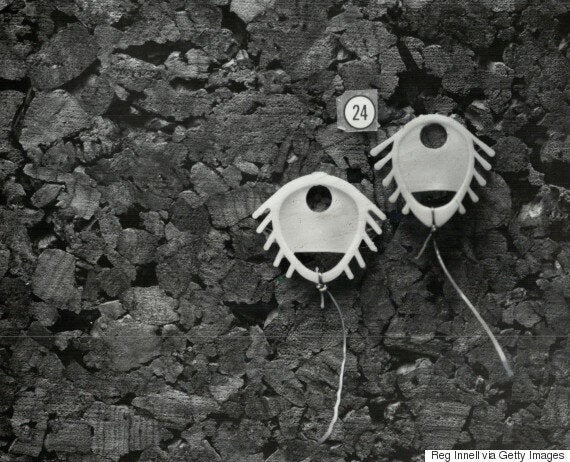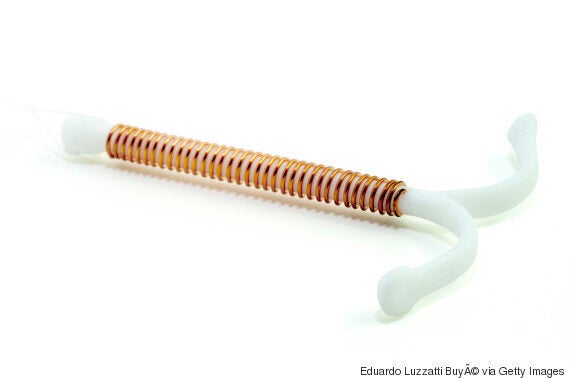At a recent meeting of the Sexual Health Network of Ontario, health care providers came together to examine and extol the virtues of the Intra Uterine Device (IUD). The IUD is a plastic device wrapped with copper that is inserted into the uterus. I have always been a proponent of this method of birth control, especially for women looking for an alternative to hormonal methods.
The IUD had to overcome a terrible reputation from the bad old days of the Dalkon Shield.

I remember the Shield well. I was a very young married woman when I had one inserted. I complained to my gynecologist that I had ongoing pain on one side which lasted several days a month. It felt like there was a plumb line attached to my ovary. It wasn't until returning from overseas that I had it taken out -- or rather dug out -- because that's what it felt like. The little claws were embedded in my uterus.
It was a deadly device. The Dalkon Shield's strings acted like a wick, drawing bacteria into the uterus, causing infections -- and in nearly two dozen cases in the U.S. -- death. The deaths in developing countries continued as "developed" countries offloaded their products abroad.

However, in the early 1980s, long after the discredited Shield had tarnished the reputation of all IUDs, new research indicated that the newer copper IUDs were both safe and effective and, in particular, did not cause ectopic pregnancies. It also became clear that they functioned as a true contraceptive by creating an unfriendly environment in the uterus which repelled sperm. This opened the door to women who had worried it was an abortifacient.
Copper IUDs
Copper IUDs are 99 to 99.8 per cent effective. In those rare cases where pregnancy occurs with an IUD in place, the pregnancy can continue as long as it is not ectopic. Statistically, pregnancy outside the uterus is more likely with an IUD; but given its high effectiveness rate, the risk is very low. A copper IUD can usually be removed if there is a pregnancy; but that would increase the risk of miscarriage.
A woman with average or no cramps and average bleeding is a good candidate. She can expect a 10 to 20 per cent increase in cramping and bleeding with a copper IUD. Counselling has changed over the years with regard to multiple partners. Health care providers were concerned about untreated Sexually Transmitted Infections (STIs) causing Pelvic Inflammatory Disease (PID) with an IUD in place. However, now STIs can be treated without removing the IUD; although, clearly, a woman with more than one partner is encouraged to use condoms.
Adolescents and women who have not been pregnant can also use the IUD.
Copper IUDs can also be used as emergency contraception up to seven days after unprotected intercourse.
There were a number of questions asked during the presentation; for example, the reason why some IUDs can stay inside the uterus longer than others. Copper IUDs vary in the number of years they can stay in place: three, five or 10 years. The main difference between one copper IUD and another is the quantity of copper used. Although Nova-T is a five year IUD, one practitioner said that they do not use it beyond 30 months because, after that point, they have found an increased risk of pregnancy. Ten year IUDs are larger and more difficult to insert and may cause more cramping on insertion.

The only contraindications to the use of a copper IUD include allergy to copper or other components of the IUD, pregnancy, endometriosis, an abnormally shaped uterus, very heavy bleeding or cramping; or active Pelvic Inflammatory Disease. There are a few risk factors, like perforation of the uterus with insertion, but perforation is rare and the uterus often repairs itself.
Intra Uterine System (IUS)
This progestin-releasing device can assist women with severely heavy bleeding as well as women with endometriosis. By three to six months, most women who use Mirena (the first IUS on the market) experience dramatically reduced bleeding. About one third of women will stop having periods after 12 months.
Because it uses the synthetic progestin levonorgestrel, it causes similar effects to Depo Provera which also uses a synthetic progestin; i.e., changes in the cervical mucus and uterine lining, making it harder for sperm to reach the uterus. And similar to Depo Provera, there may be side effects, including:
•bleeding and spotting between periods
•heavier bleeding during the first few weeks after device insertion
•headache/migraine
•nausea
•bloating
•breast tenderness or pain
•weight gain
•changes in hair growth
•acne
•depression
•changes in mood
As always, it is important that health care providers explain fully what a woman may expect.
I learned about some newer IUS devices aside from the more commonly known Mirena: Jaydess, a smaller, low-dose version, good for three years; and Kyleena, which releases the lowest dose of hormones for the longest amount of time. Mirena has the highest dose of progestin of the three and is approved for five years, although data indicate it is effective up to seven.
The IUS can cause spotting for two to six months. During the presentation, I had noticed two Orthodox Jewish women and a Muslim woman in attendance. I made a comment about my birth control counselling at clinic regarding spotting. Because there may be religious strictures about having intercourse in the presence of blood, I always made sure that women for whom this was an issue were well informed.
Speaking of blood, there was an interesting discussion around using a menstrual cup with the IUD. Because of the suction on the vaginal walls with a cup, to avoid expulsion it is best to gently break the suction before removing the cup. Another precaution would be not to use a menstrual cup for two months after an IUD insertion because the risk of expulsion is highest in those first two months.
The copper IUD is an excellent choice for women who want long-term, safe and effective contraception, but prefer not to use hormones. Make sure that your health care provider has plenty of experience with insertion.
Follow HuffPost Canada Blogs on Facebook
Also on HuffPost: